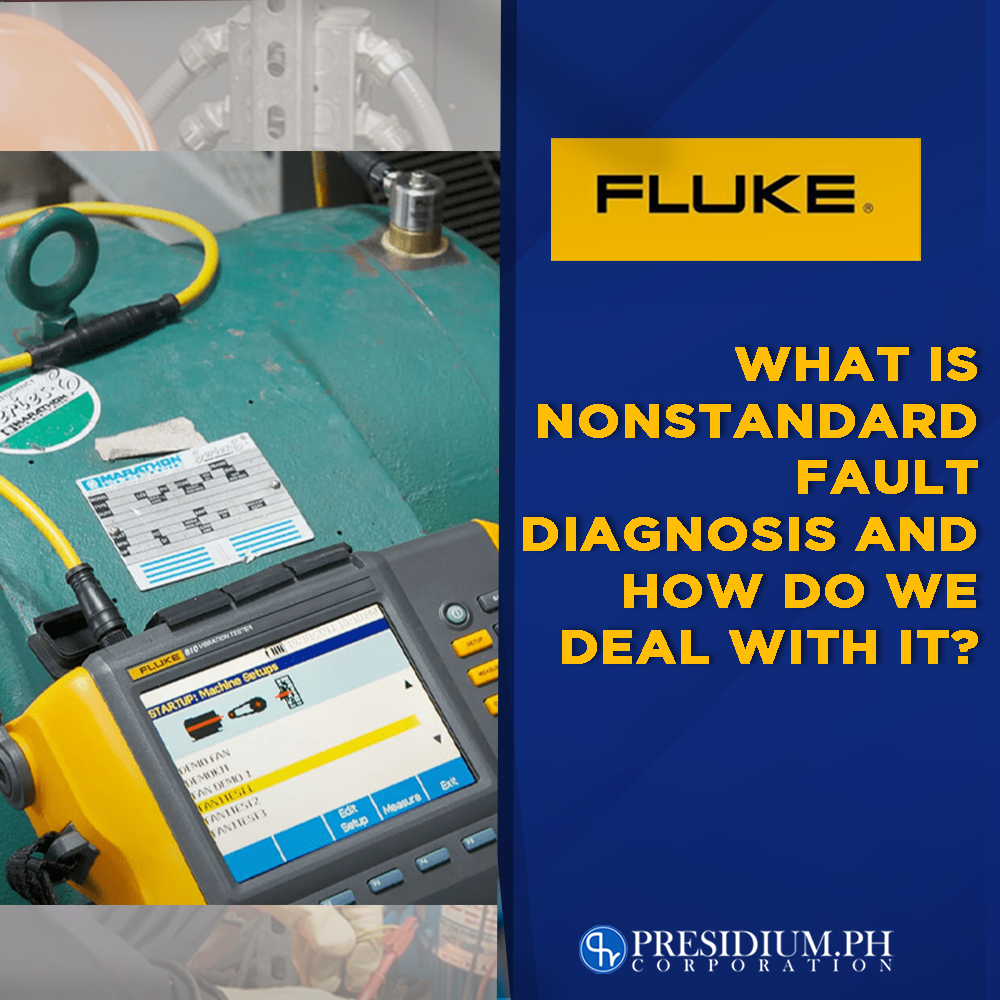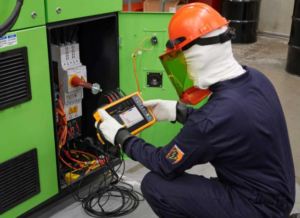What is Nonstandard Fault Diagnosis and How Do We Deal With It?

What is it?
Wondering what a non-standard fault diagnosis is? If you are not a maintenance person, this may sound alien to you, but for maintenance people out there, it may be a piece of common knowledge. To give you a brief context, this kind of fault can easily be prevented by the thorough configuration and setup of your Fluke tool. Yes, that’s right, nonstandard fault diagnosis can stem from the assembly of your Fluke tool itself.
So before you go blaming the machine, see if you’ve got everything inputted in your Fluke device. Then again, aside from the setup itself, there are also some other underlying issues on why your Fluke tool is tagging it as a nonstandard fault diagnosis.
The three main causes of nonstandard fault diagnosis
With the use of Fluke tools, no doubt you can spot issues within your machines in a jiffy! For this one, we strongly recommend the use of the Fluke 810. Vibration Testers are one of the most recommended tools to spot machine faults. Not only is it highly effective in the field, but it can give you accurate diagnoses and solutions.
One of the most wonderful functions of this Fluke tool is its ability to detect, locate, and assess the severity of issues within equipment and rotating parts. May it be bearing condition, misalignment, imbalance, or looseness, one thing is for sure, it can be seen and resolved with the use of the Fluke 810 Vibration tester. In line with this, it can also tell nonstandard faults. Here are the three main causes…
1. Incorrect or incomplete setup. For this to work, you need to accurately input all the data of your machine while setting up the Fluke 810 Vibration Tester. One of the common faults of why you’re getting a nonstandard fault diagnosis is you’ve not put all the information of the machine you’re testing. So take note, it’s important for you to process everything while setting up your vibration tester.
2. Incorrect or insufficient data collection. Again, incorrect inputting of data plays a big hand in this. Technically, this happens when the minimum data collection requirements were not met. Moreover, the running speed of the machine (which was not accurately entered) can also be the cause of this.
3. Vibration condition other than one of the four standard faults. Yes, you can still have a nonstandard fault diagnosis other than detecting the four standard faults. Ideally, The Fluke 810 recognizes these readings. However, we will get to that in a little bit.
How to deal with nonstandard fault diagnosis
If you find yourself having a nonstandard fault diagnosis whilst doing a normal testing procedure, the next thing you should do is to have another test. See if the result stays the same or if it changed. If the results change, then it might just be the effects of having data collection errors or vibration events. However, if you do get another nonstandard fault diagnosis, then it might be high time to undergo another process. Here is how you will do it…
- You might have to tinker with your Fluke tool. Specifically check if information about the driver, transmission, and driven component has been entered (or other relevant data). In addition, also take note of the component types. Was the AC motor accurately described like the DC? How about the screw compressor? It might have been entered as a piston compressor.
Technically, these are the things you have to double-check once you have a second reading of a nonstandard fault diagnosis.
- Data quality and quantity are enough to achieve an accurate diagnosis. Again, complete information is necessary when you’re working with the Fluke 810 Vibration Tester. A good practice (or something to keep in mind) is never to set up or test partial drivetrains.
- Double-check if the vibration data was collected. See if the location and orientation of the components are the same as the ones on the setup diagram in the Fluke 810.
Consider these other fault conditions…
In such a time that you’ve inputted all information but are still getting the same nonstandard fault diagnosis result, then you might consider these other faults that are not brought up by your Fluke 810 device setup. According to an official Fluke source, these are the probable causes…
Electrical
Electrical switching fault in a variable frequency drive
Problems with Motor components (stator, winding, commutator, brush)
Motor lamination looseness
Motor air gap problem
Line phase voltage imbalance
Non-bearing mechanical element wear or defect
Pump component (vane, timing gear, impeller, piston, idler shaft, rotor) wear or clearance problemsMotor cooling fan blade damage
Gearbox input shaft pinion problem
First gear mesh problem or wear
Fan wheel wobble
Fan dirt buildup or blade clearance problem
Sheave problems
Drive belt irregularity
Coupling wear
Compressor components (rotor thread, piston/valve, impeller, lobe) wear
Flow related
Pump cavitation or air ingestion
Fan airflow disturbance
Compressor gas pulsation Structural
Structural vibration or resonance
Motor or pump mounting flexibility
Motor foundation flexibility or resonance
Foundation weakness or resonance
Foundation vibration
Fan mounting transverse flexibility
Other
Overloaded accelerometer
Oil whirl
Oil whip
Resolve these failures using Fluke Tools!
Hey, you made it to the bottom! Are you currently looking for the best-performing test tools in the market to run daily maintenance checks on your rotating machines? You’re in luck cause Presidium PH is an authorized distributor of Fluke test tools in the Philippines. Prevent these faults from penetrating your rotating machine by using the best test tools there are!
If you want to know more about Fluke tools and their functions, visit our website for more info! This is a one-stop shop for the best test tools within Metro Manila.





